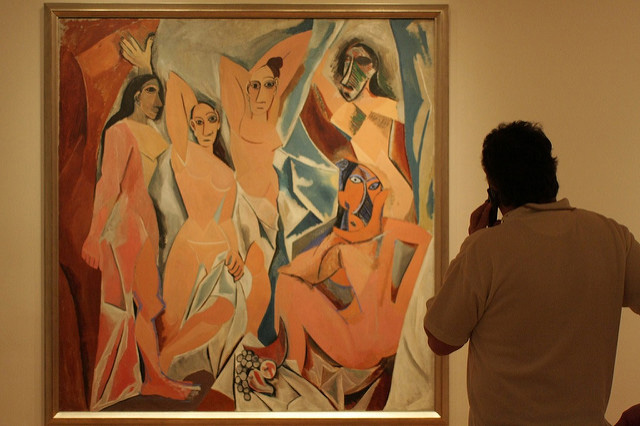On Monday, October 31, Picasso’s electrician in the 1970s, Pierre Le Guennec, who was found guilty in March 2015 guilty of possessing stolen goods, admitted in a court of appeal in Aix en Provence to lying.
The former electrician and his wife Danielle, who hid 271 Picasso works in their garage for close to 40 years, were charged in a Grasse court 18 months ago for possessing stolen goods, after a trial that made headlines in France and abroad.
“Picasso had total confidence in me. Maybe it was my discretion,” Le Guennec originally told the Grasse court last year. He said that one day, Picasso’s wife Jacqueline, came up to him and gave him a box with the 271 works inside, saying, “this is for you”.
When he got home, he found what he described as “drawings, sketches, crumpled paper”.
Uninterested in the haul, he put the box in his garage and discovered it again decades later in 2009.
In court Monday, however, Le Guennec painted a different story, saying that in 1973 Jacqueline asked him to temporarily store 15 to 17 trash bags full of artwork. In time, she reclaimed all but one of the bags, which she gave to the electrician to keep. He said that Jacqueline “had problems with Claude,” meaning she intended to keep the works from her stepson, “and prevent them from being inventoried and passed on to him”.
At the time of last year’s sentencing the 75-year old mumbled, “ “We’re disappointed.
“We’re honest people. Perhaps we don’t know how to speak …” he added, before his wife blurted out: “We’re just little people. We don’t have a great name.”
Prosecutors had called for the couple to receive a five-year suspended jail sentence.
The couple’s lawyer, Evelyne Rees, had said she would appeal the verdict.
Pierre Le Guennec insisted throughout that trial that the art legend and his wife gave him the treasure trove when he was working on the last property they lived in before Picasso died in 1973.
He went to Paris the following year to get the works authenticated at the Picasso Administration, but the artist’s heirs promptly filed a complaint against him.
One of the artist’s children, Maya Widmaier-Picasso, said: “It’s a downright cheek to try and make us swallow that story.”
“These works should never have been removed from the estate and from the history of art,” said her half-brother, Claude Ruiz-Picasso.
During the 2015 trial, all 271 works, created between 1900 and 1932, were projected onto a giant screen in respectful silence.
A lot of the evidence during the trial centred around why none of the works were signed, with several witnesses saying the artist would sign everything — partly to ensure against theft.
According to Gerard Sassier, the son of Picasso’s long-time chambermaid, the artist once said after a theft attempt: “Anyway, nothing can be stolen as nothing is signed.”
The defence argued that it would have been extremely difficult to steal from Picasso as the artist had “an amazing memory” and his property was heavily protected like a “fortress.”
One of the few plaintiffs to have known Le Guennec when he was employed by the Picasso family, the artist’s grand-daughter Catherine Hutin-Blay, acknowledged during the trial that the electrician did have a special relationship with the artist.
“We really trusted him. He was someone who was very familiar in the house and had an absolutely friendly relationship,” she told the court.
The works, which have been unofficially estimated at over €60 million have been seized by authorities and will be returned to the Picasso Administration, which represents the artist’s heirs.
The Le Guennecs could face up to five years in prison and a fine either equal to half the value of the artwork in question, or €375,000, whichever figure ends up being higher.
Article first published November 2, 2016.
Picasso electrician admits to lying about theft

